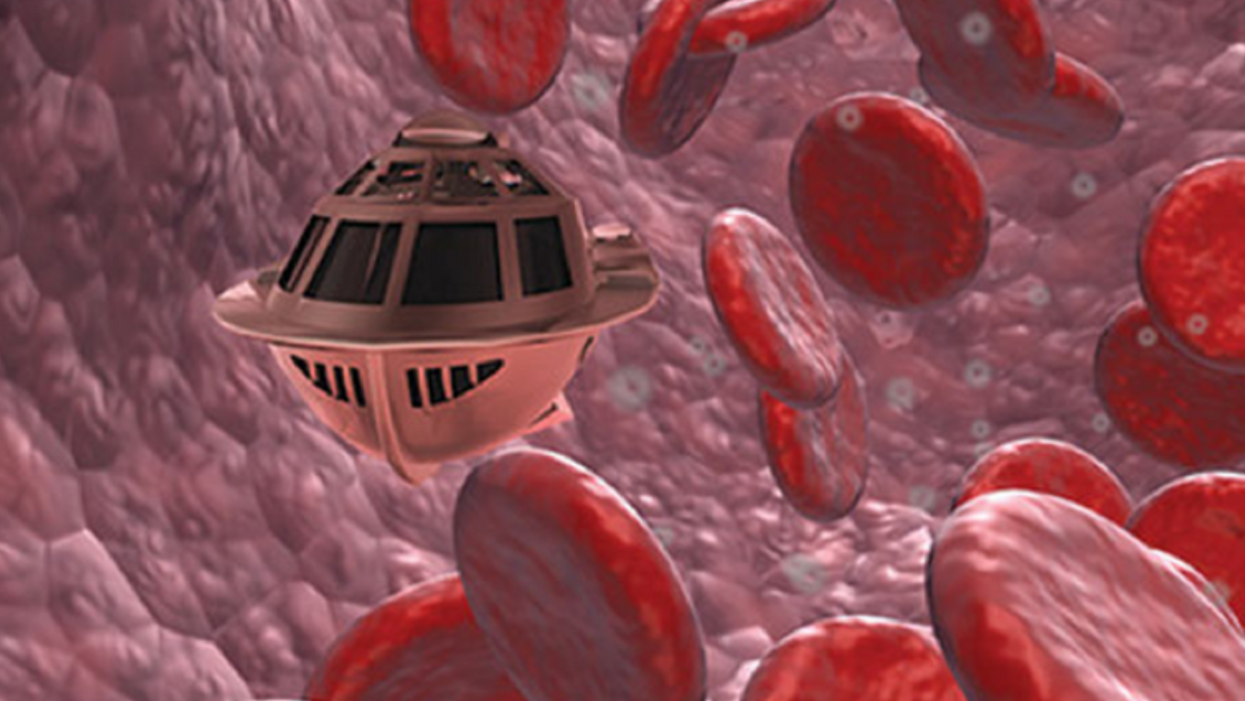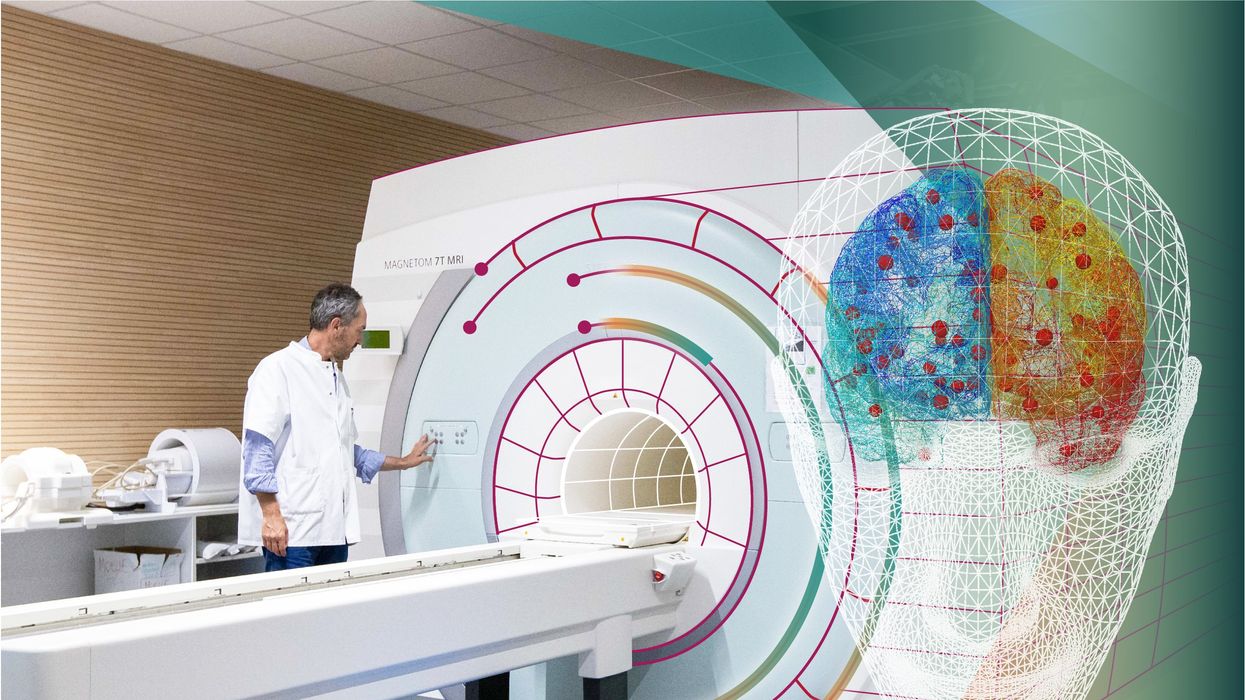Is China Winning the Innovation Race?
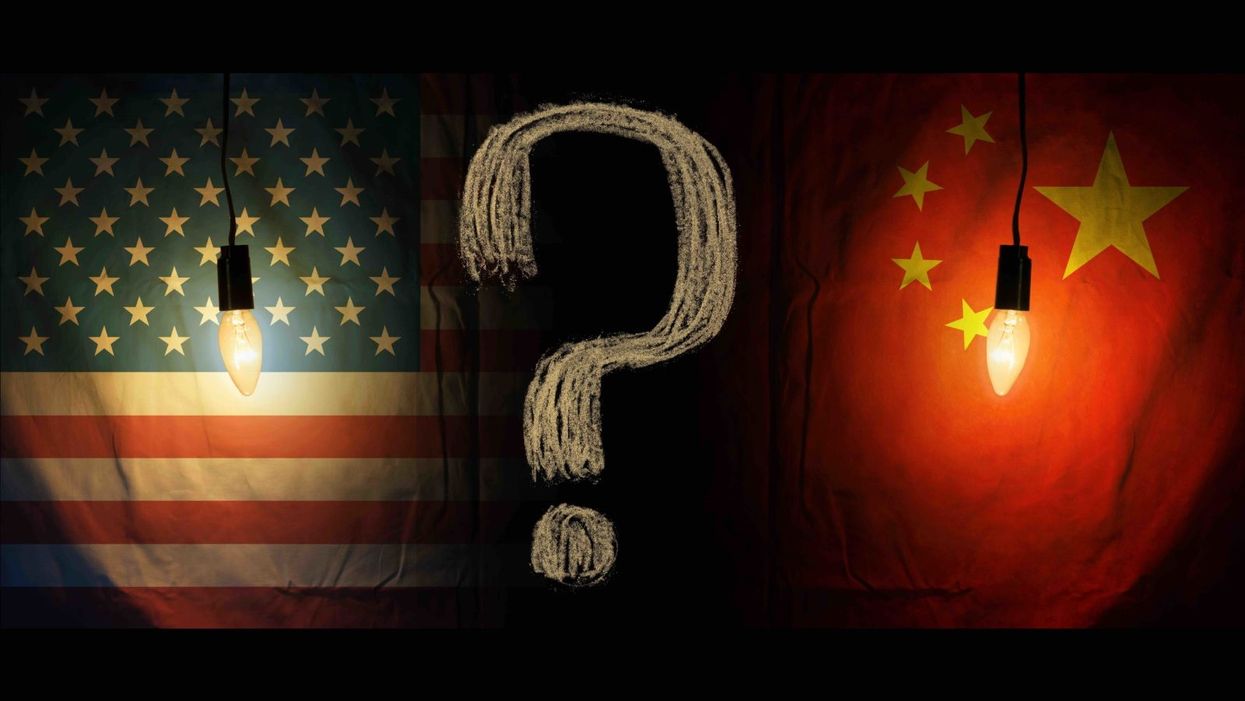
Flags of America and China illuminated by light bulbs with a question mark between them.
Over the past two millennia, Chinese ingenuity has spawned some of humanity's most consequential inventions. Without gunpowder, guns, bombs, and rockets; without paper, printing, and money printed on paper; and without the compass, which enabled ships to navigate the open ocean, modern civilization might never have been born.
Today, a specter is haunting the developed world: Chinese innovation dominance. And the results have been so spectacular that the United States feels its preeminence threatened.
Yet China lapsed into cultural and technological stagnation during the Qing dynasty, just as the Scientific Revolution was transforming Europe. Western colonial incursions and a series of failed rebellions further sapped the Celestial Empire's capacity for innovation. By the mid-20th century, when the Communist triumph led to a devastating famine and years of bloody political turmoil, practically the only intellectual property China could offer for export was Mao's Little Red Book.
After Deng Xiaoping took power in 1978, launching a transition from a rigidly planned economy to a semi-capitalist one, China's factories began pumping out goods for foreign consumption. Still, originality remained a low priority. The phrase "Made in China" came to be synonymous with "cheap knockoff."
Today, however, a specter is haunting the developed world: Chinese innovation dominance. It first wafted into view in 2006, when the government announced an "indigenous innovation" campaign, dedicated to establishing China as a technology powerhouse by 2020—and a global leader by 2050—as part of its Medium- and Long-Term National Plan for Science and Technology Development. Since then, an array of initiatives have sought to unleash what pundits often call the Chinese "tech dragon," whether in individual industries, such as semiconductors or artificial intelligence, or across the board (as with the Made in China 2025 project, inaugurated in 2015). These efforts draw on a well-stocked bureaucratic arsenal: state-directed financing; strategic mergers and acquisitions; competition policies designed to boost domestic companies and hobble foreign rivals; buy-Chinese procurement policies; cash incentives for companies to file patents; subsidies for academic researchers in favored fields.
The results have been spectacular—so much so that the United States feels its preeminence threatened. Voices across the political spectrum are calling for emergency measures, including a clampdown on technology transfers, capital investment, and Chinese students' ability to study abroad. But are the fears driving such proposals justified?
"We've flipped from thinking China is incapable of anything but imitation to thinking China is about to eat our lunch," says Kaiser Kuo, host of the Sinica podcast at supchina.com, who recently returned to the U.S after 20 years in Beijing—the last six as director of international communications for the tech giant Baidu. Like some other veteran China-watchers, Kuo believes neither extreme reflects reality. "We're in as much danger now of overestimating China's innovative capacity," he warns, "as we were a few years ago of underestimating it."
A Lab and Tech-Business Bonanza
By many measures, China's innovation renaissance is mind-boggling. Spending on research and development as a percentage of gross domestic product nearly quadrupled between 1996 and 2016, from .56 percent to 2.1 percent; during the same period, spending in the United States rose by just .3 percentage points, from 2.44 to 2.79 percent of GDP. China is now second only to the U.S. in total R&D spending, accounting for 21 percent of the global total of $2 trillion, according to a report released in January by the National Science Foundation. In 2016, the number of scientific publications from China exceeded those from the U.S. for the first time, by 426,000 to 409,000. Chinese researchers are blazing new trails on the frontiers of cloning, stem cell medicine, gene editing, and quantum computing. Chinese patent applications have soared from 170,000 to nearly 3 million since 2000; the country now files almost as many international patents as the U.S. and Japan, and more than Germany and South Korea. Between 2008 and 2017, two Chinese tech firms—Huawei and ZTE—traded places as the world's top patent filer in six out of nine years.
"China is still in its Star Trek phase, while we're in our Black Mirror phase." Yet there are formidable barriers to China beating America in the innovation race—or even catching up anytime soon.
Accompanying this lab-based ferment is a tech-business bonanza. China's three biggest internet companies, Baidu, Alibaba Group and Tencent Holdings (known collectively as BAT), have become global titans of search, e-commerce, mobile payments, gaming, and social media. Da-Jiang Innovations in Science and Technology (DJI) controls more than 70 percent of the world's commercial drone market. Of the planet's 262 "unicorns" (startups worth more than a billion dollars), about one-third are Chinese. The country attracted $77 billion in venture capital investment between 2014 and 2016, according to Fortune, and is now among the top three markets for VC in emerging technologies including AI, virtual reality, autonomous vehicles, and 3D printing.
These developments have fueled a buoyant techno-optimism in China that contrasts sharply with the darker view increasingly prevalent in the West—in part, perhaps, because China's historic limits on civil liberties have inured the populace to the intrusive implications of, say, facial recognition technology or social-credit software, which are already being used to tighten government control. "China is still in its Star Trek phase, while we're in our Black Mirror phase," Kuo observes. By contrast with Americans' ambivalent attitudes toward Facebook founder Mark Zuckerberg or Amazon's Jeff Bezos, he adds, most Chinese regard tech entrepreneurs like Baidu's Robin Li and Alibaba's Jack Ma as "flat-out heroes."
Yet there are formidable barriers to China beating America in the innovation race—or even catching up anytime soon. Many are catalogued in The Fat Tech Dragon, a 2017 monograph by Scott Kennedy, deputy director of the Freeman Chair in China Studies and director of the Project on Chinese Business and Political Economy at the Center for Strategic and International Studies. Among the obstacles, Kennedy writes, are "an education system that encourages deference to authority and does not prepare students to be creative and take risks, a financial system that disproportionately funnels funds to undeserving state-owned enterprises… and a market structure where profits can be made through a low-margin, high-volume strategy or through political connections."
China's R&D money, Kennedy points out, is mostly showered on the "D": of the $209 billion spent in 2015, only 5 percent went toward basic research, 10.8 percent toward applied research, and a massive 84.2 percent toward development. While fully half of venture capital in the States goes to early-stage startups, the figure for China is under 20 percent; true "angel" investors are scarce. Likewise, only 21 percent of Chinese patents are for original inventions, as opposed to tweaks of existing technologies. Most problematic, the domestic value of patents in China is strikingly low. In 2015, the country's patent licensing generated revenues of just $1.75 billion, compared to $115 billion for IP licensing in the U.S. in 2012 (the most recent year for which data is available). In short, Kennedy concludes, "China may now be a 'large' IP country, but it is still a 'weak' one."
"[The Chinese] are trying very hard to keep the economy from crashing, but it'll happen eventually. Then there will be a major, major contraction."
Anne Stevenson-Yang, co-founder and research director of J Capital Research, and a leading China analyst, sees another potential stumbling block: the government's obsession with neck-snapping GDP growth. "What China does is to determine, 'Our GDP growth will be X,' and then it generates enough investment to create X," Stevenson-Yang explains. To meet those quotas, officials pour money into gigantic construction projects, creating the empty "ghost cities" that litter the countryside, or subsidize industrial production far beyond realistic demand. "It's the ultimate Ponzi-scheme economy," she says, citing as examples the Chinese cellphone and solar industries, which ballooned on state funding, flooded global markets with dirt-cheap products, thrived just long enough to kill off most of their overseas competitors, and then largely collapsed. Such ventures, Stevenson-Yang notes, have driven China's debt load perilously high. "They're trying very hard to keep the economy from crashing, but it'll happen eventually," she predicts. "Then there will be a major, major contraction."
"An Intensifying Race Toward Techno-Nationalism"
The greatest vulnerability of the Chinese innovation boom may be that it still depends heavily on imported IP. "Over the last few years, China has placed its bets on a combination of global knowledge sourcing and indigenous technology development," says Dieter Ernst, a senior fellow at the Centre for International Governance Innovation in Waterloo, Canada, and the East-West Center in Honolulu, who has served as an Asia advisor for the U.N. and the World Bank. Aside from international journals (and, occasionally, industrial espionage), Chinese labs and corporations obtain non-indigenous knowledge in a number of ways: by paying licensing fees; recruiting Chinese scientists and engineers who've studied or worked abroad; hiring professionals from other countries; or acquiring foreign companies. And though enforcement of IP laws has improved markedly in recent years, foreign businesses are often pressured to provide technology transfers in exchange for access to markets.
Many of China's top tech entrepreneurs—including Ma, Li, and Alibaba's Joseph Tsai—are alumni of U.S. universities, and, as Kuo puts it, "big fans of all things American." Unfortunately, however, Americans are ever less likely to be fans of China, thanks largely to that country's sometimes predatory trade practices—and also to what Ernst calls "an intensifying race toward techno-nationalism." With varying degrees of bellicosity and consistency, leaders of both U.S. parties embrace elements of the trend, as do politicians (and voters) across much of Europe. "There's a growing consensus that China is poised to overtake us," says Ernst, "and that we need to design policies to obstruct its rise."
One of the foremost liberal analysts supporting this view is Lee Branstetter, a professor of economics and public policy at Carnegie Mellon University and former senior economist on President Barack Obama's Council of Economic Advisors. "Over the decades, in a systematic and premeditated fashion, the Chinese government and its state-owned enterprises have worked to extract valuable technology from foreign multinationals, with an explicit goal of eventually displacing those leading multinationals with successful Chinese firms in global markets," Branstetter wrote in a 2017 report to the United States Trade Representative. To combat such "forced transfers," he suggested, laws could be passed empowering foreign governments to investigate coercive requests and block any deemed inappropriate—not just those involving military-related or crucial infrastructure technology, which current statutes cover. Branstetter also called for "sharply" curtailing Chinese students' access to Western graduate programs, as a way to "get policymakers' attention in Beijing" and induce them to play fair.
Similar sentiments are taking hold in Congress, where the Foreign Investment Risk Review Modernization Act—aimed at strengthening the process by which the Committee on Foreign Investment in the United States reviews Chinese acquisition of American technologies—is expected to pass with bipartisan support, though its harsher provisions were softened due to objections from Silicon Valley. The Trump Administration announced in May that it would soon take executive action to curb Chinese investments in U.S. tech firms and otherwise limit access to intellectual property. The State Department, meanwhile, imposed a one-year limit on visas for Chinese grad students in high-tech fields.
Ernst argues that such measures are motivated largely by exaggerated notions of China's ability to reach its ambitious goals, and by the political advantages that fearmongering confers. "If you look at AI, chip design and fabrication, robotics, pharmaceuticals, the gap with the U.S. is huge," he says. "Reducing it will take at least 10 or 15 years."
Cracking down on U.S. tech transfers to Chinese companies, Ernst cautions, will deprive U.S. firms of vital investment capital and spur China to retaliate, cutting off access to the nation's gargantuan markets; it will also push China to forge IP deals with more compliant nations, or revert to outright piracy. And restricting student visas, besides harming U.S. universities that depend on Chinese scholars' billions in tuition, will have a "chilling effect on America's ability to attract to researchers and engineers from all countries."
"It's not a zero-sum game. I don't think China is going to eat our lunch. We can sit down and enjoy lunch together."
America's own science and technology community, Ernst adds, considers it crucial to swap ideas with China's fast-growing pool of talent. The 2017 annual meeting of the Palo Alto-based Association for Advancement of Artificial Intelligence, he notes, featured a nearly equal number of papers by researchers in China and the U.S. Organizers postponed the meeting after discovering that the original date coincided with the Chinese New Year.
China's rising influence on the tech world carries upsides as well as downsides, Scott Kennedy observes. The country's successes in e-commerce, he says, "haven't damaged the global internet sector, but have actually been a spur to additional innovation and progress. By contrast, China's success in solar and wind has decimated the global sectors," due to state-mandated overcapacity. "When Chinese firms win through open competition, the outcome is constructive; when they win through industrial policy and protectionism, the outcome is destructive."
The solution, Kennedy and like-minded experts argue, is to discourage protectionism rather than engage in it, adjusting tech-transfer policy just enough to cope with evolving national-security concerns. Instead of trying to squelch China's innovation explosion, they say, the U.S. should seek ways to spread its potential benefits (as happened in previous eras with Japan and South Korea), and increase America's indigenous investments in tech-related research, education, and job training.
"It's not a zero-sum game," says Kaiser Kuo. "I don't think China is going to eat our lunch. We can sit down and enjoy lunch together."
A movie still from the 1966 film "Fantastic Voyage"
In the 1966 movie "Fantastic Voyage," actress Raquel Welch and her submarine were shrunk to the size of a cell in order to eliminate a blood clot in a scientist's brain. Now, 55 years later, the scenario is becoming closer to reality.
California-based startup Bionaut Labs has developed a nanobot about the size of a grain of rice that's designed to transport medication to the exact location in the body where it's needed. If you think about it, the conventional way to deliver medicine makes little sense: A painkiller affects the entire body instead of just the arm that's hurting, and chemotherapy is flushed through all the veins instead of precisely targeting the tumor.
"Chemotherapy is delivered systemically," Bionaut-founder and CEO Michael Shpigelmacher says. "Often only a small percentage arrives at the location where it is actually needed."
But what if it was possible to send a tiny robot through the body to attack a tumor or deliver a drug at exactly the right location?
Several startups and academic institutes worldwide are working to develop such a solution but Bionaut Labs seems the furthest along in advancing its invention. "You can think of the Bionaut as a tiny screw that moves through the veins as if steered by an invisible screwdriver until it arrives at the tumor," Shpigelmacher explains. Via Zoom, he shares the screen of an X-ray machine in his Culver City lab to demonstrate how the half-transparent, yellowish device winds its way along the spine in the body. The nanobot contains a tiny but powerful magnet. The "invisible screwdriver" is an external magnetic field that rotates that magnet inside the device and gets it to move and change directions.
The current model has a diameter of less than a millimeter. Shpigelmacher's engineers could build the miniature vehicle even smaller but the current size has the advantage of being big enough to see with bare eyes. It can also deliver more medicine than a tinier version. In the Zoom demonstration, the micorobot is injected into the spine, not unlike an epidural, and pulled along the spine through an outside magnet until the Bionaut reaches the brainstem. Depending which organ it needs to reach, it could be inserted elsewhere, for instance through a catheter.
"The hope is that we can develop a vehicle to transport medication deep into the body," says Max Planck scientist Tian Qiu.
Imagine moving a screw through a steak with a magnet — that's essentially how the device works. But of course, the Bionaut is considerably different from an ordinary screw: "At the right location, we give a magnetic signal, and it unloads its medicine package," Shpigelmacher says.
To start, Bionaut Labs wants to use its device to treat Parkinson's disease and brain stem gliomas, a type of cancer that largely affects children and teenagers. About 300 to 400 young people a year are diagnosed with this type of tumor. Radiation and brain surgery risk damaging sensitive brain tissue, and chemotherapy often doesn't work. Most children with these tumors live less than 18 months. A nanobot delivering targeted chemotherapy could be a gamechanger. "These patients really don't have any other hope," Shpigelmacher says.
Of course, the main challenge of the developing such a device is guaranteeing that it's safe. Because tissue is so sensitive, any mistake could risk disastrous results. In recent years, Bionaut has tested its technology in dozens of healthy sheep and pigs with no major adverse effects. Sheep make a good stand-in for humans because their brains and spines are similar to ours.
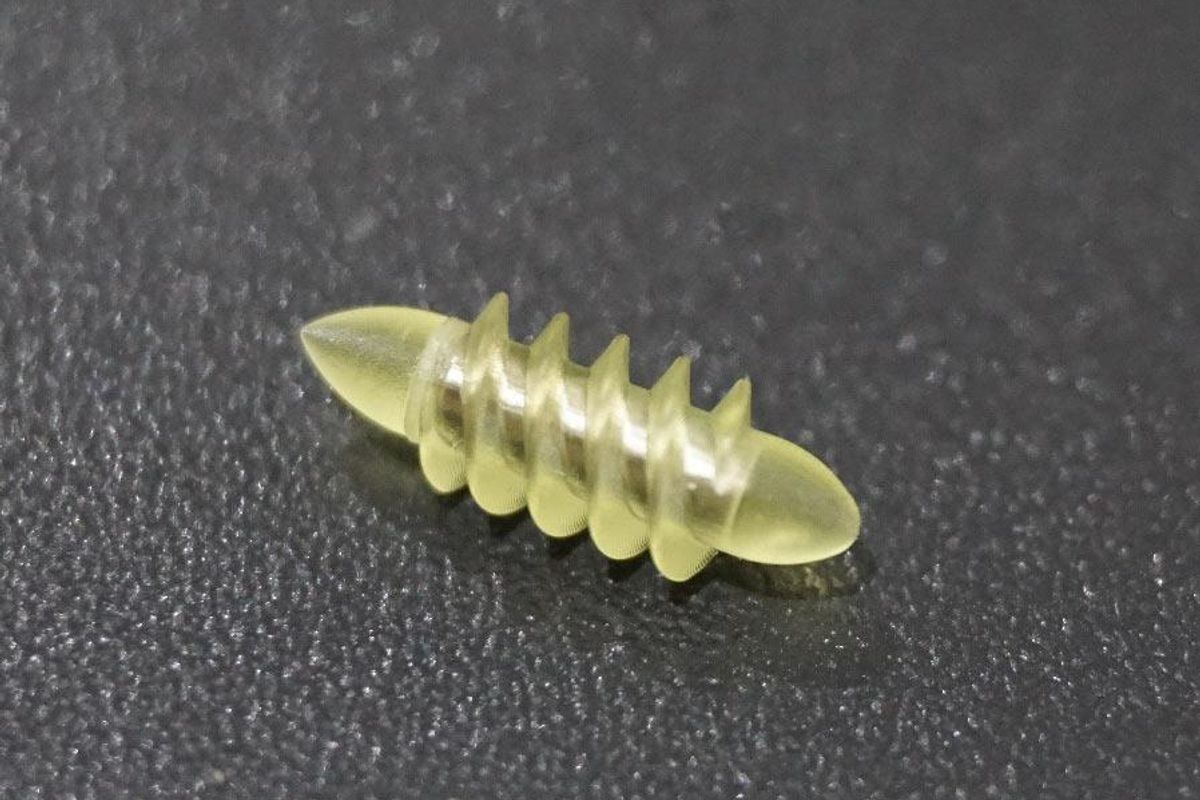
The Bionaut device is about the size of a grain of rice.
Bionaut Labs
"As the Bionaut moves through brain tissue, it creates a transient track that heals within a few weeks," Shpigelmacher says. The company is hoping to be the first to test a nanobot in humans. In December 2022, it announced that a recent round of funding drew $43.2 million, for a total of 63.2 million, enabling more research and, if all goes smoothly, human clinical trials by early next year.
Once the technique has been perfected, further applications could include addressing other kinds of brain disorders that are considered incurable now, such as Alzheimer's or Huntington's disease. "Microrobots could serve as a bridgehead, opening the gateway to the brain and facilitating precise access of deep brain structure – either to deliver medication, take cell samples or stimulate specific brain regions," Shpigelmacher says.
Robot-assisted hybrid surgery with artificial intelligence is already used in state-of-the-art surgery centers, and many medical experts believe that nanorobotics will be the instrument of the future. In 2016, three scientists were awarded the Nobel Prize in Chemistry for their development of "the world's smallest machines," nano "elevators" and minuscule motors. Since then, the scientific experiments have progressed to the point where applicable devices are moving closer to actually being implemented.
Bionaut's technology was initially developed by a research team lead by Peer Fischer, head of the independent Micro Nano and Molecular Systems Lab at the Max Planck Institute for Intelligent Systems in Stuttgart, Germany. Fischer is considered a pioneer in the research of nano systems, which he began at Harvard University more than a decade ago. He and his team are advising Bionaut Labs and have licensed their technology to the company.
"The hope is that we can develop a vehicle to transport medication deep into the body," says Max Planck scientist Tian Qiu, who leads the cooperation with Bionaut Labs. He agrees with Shpigelmacher that the Bionaut's size is perfect for transporting medication loads and is researching potential applications for even smaller nanorobots, especially in the eye, where the tissue is extremely sensitive. "Nanorobots can sneak through very fine tissue without causing damage."
In "Fantastic Voyage," Raquel Welch's adventures inside the body of a dissident scientist let her swim through his veins into his brain, but her shrunken miniature submarine is attacked by antibodies; she has to flee through the nerves into the scientist's eye where she escapes into freedom on a tear drop. In reality, the exit in the lab is much more mundane. The Bionaut simply leaves the body through the same port where it entered. But apart from the dramatization, the "Fantastic Voyage" was almost prophetic, or, as Shpigelmacher says, "Science fiction becomes science reality."
This article was first published by Leaps.org on April 12, 2021.
How the Human Brain Project Built a Mind of its Own
In 2013, the Human Brain Project set out to build a realistic computer model of the brain over ten years. Now, experts are reflecting on HBP's achievements with an eye toward the future.
In 2009, neuroscientist Henry Markram gave an ambitious TED talk. “Our mission is to build a detailed, realistic computer model of the human brain,” he said, naming three reasons for this unmatched feat of engineering. One was because understanding the human brain was essential to get along in society. Another was because experimenting on animal brains could only get scientists so far in understanding the human ones. Third, medicines for mental disorders weren’t good enough. “There are two billion people on the planet that are affected by mental disorders, and the drugs that are used today are largely empirical,” Markram said. “I think that we can come up with very concrete solutions on how to treat disorders.”
Markram's arguments were very persuasive. In 2013, the European Commission launched the Human Brain Project, or HBP, as part of its Future and Emerging Technologies program. Viewed as Europe’s chance to try to win the “brain race” between the U.S., China, Japan, and other countries, the project received about a billion euros in funding with the goal to simulate the entire human brain on a supercomputer, or in silico, by 2023.
Now, after 10 years of dedicated neuroscience research, the HBP is coming to an end. As its many critics warned, it did not manage to build an entire human brain in silico. Instead, it achieved a multifaceted array of different goals, some of them unexpected.
Scholars have found that the project did help advance neuroscience more than some detractors initially expected, specifically in the area of brain simulations and virtual models. Using an interdisciplinary approach of combining technology, such as AI and digital simulations, with neuroscience, the HBP worked to gain a deeper understanding of the human brain’s complicated structure and functions, which in some cases led to novel treatments for brain disorders. Lastly, through online platforms, the HBP spearheaded a previously unmatched level of global neuroscience collaborations.
Simulating a human brain stirs up controversy
Right from the start, the project was plagued with controversy and condemnation. One of its prominent critics was Yves Fregnac, a professor in cognitive science at the Polytechnic Institute of Paris and research director at the French National Centre for Scientific Research. Fregnac argued in numerous articles that the HBP was overfunded based on proposals with unrealistic goals. “This new way of over-selling scientific targets, deeply aligned with what modern society expects from mega-sciences in the broad sense (big investment, big return), has been observed on several occasions in different scientific sub-fields,” he wrote in one of his articles, “before invading the field of brain sciences and neuromarketing.”
"A human brain model can simulate an experiment a million times for many different conditions, but the actual human experiment can be performed only once or a few times," said Viktor Jirsa, a professor at Aix-Marseille University.
Responding to such critiques, the HBP worked to restructure the effort in its early days with new leadership, organization, and goals that were more flexible and attainable. “The HBP got a more versatile, pluralistic approach,” said Viktor Jirsa, a professor at Aix-Marseille University and one of the HBP lead scientists. He believes that these changes fixed at least some of HBP’s issues. “The project has been on a very productive and scientifically fruitful course since then.”
After restructuring, the HBP became a European hub on brain research, with hundreds of scientists joining its growing network. The HBP created projects focused on various brain topics, from consciousness to neurodegenerative diseases. HBP scientists worked on complex subjects, such as mapping out the brain, combining neuroscience and robotics, and experimenting with neuromorphic computing, a computational technique inspired by the human brain structure and function—to name just a few.
Simulations advance knowledge and treatment options
In 2013, it seemed that bringing neuroscience into a digital age would be farfetched, but research within the HBP has made this achievable. The virtual maps and simulations various HBP teams create through brain imaging data make it easier for neuroscientists to understand brain developments and functions. The teams publish these models on the HBP’s EBRAINS online platform—one of the first to offer access to such data to neuroscientists worldwide via an open-source online site. “This digital infrastructure is backed by high-performance computers, with large datasets and various computational tools,” said Lucy Xiaolu Wang, an assistant professor in the Resource Economics Department at the University of Massachusetts Amherst, who studies the economics of the HBP. That means it can be used in place of many different types of human experimentation.
Jirsa’s team is one of many within the project that works on virtual brain models and brain simulations. Compiling patient data, Jirsa and his team can create digital simulations of different brain activities—and repeat these experiments many times, which isn’t often possible in surgeries on real brains. “A human brain model can simulate an experiment a million times for many different conditions,” Jirsa explained, “but the actual human experiment can be performed only once or a few times.” Using simulations also saves scientists and doctors time and money when looking at ways to diagnose and treat patients with brain disorders.
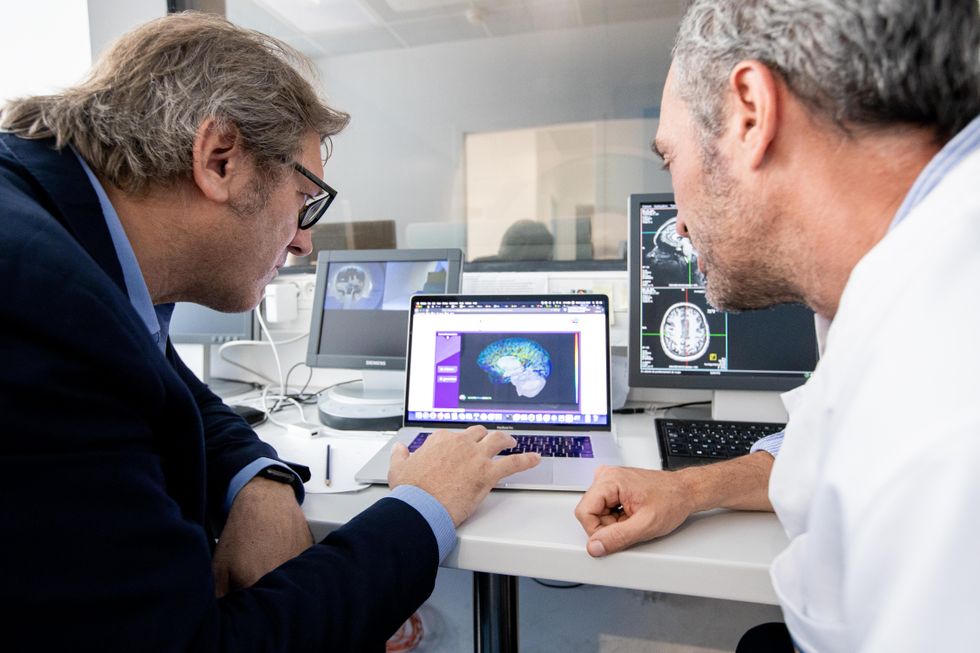
Compiling patient data, scientists can create digital simulations of different brain activities—and repeat these experiments many times.
The Human Brain Project
Simulations can help scientists get a full picture that otherwise is unattainable. “Another benefit is data completion,” added Jirsa, “in which incomplete data can be complemented by the model. In clinical settings, we can often measure only certain brain areas, but when linked to the brain model, we can enlarge the range of accessible brain regions and make better diagnostic predictions.”
With time, Jirsa’s team was able to move into patient-specific simulations. “We advanced from generic brain models to the ability to use a specific patient’s brain data, from measurements like MRI and others, to create individualized predictive models and simulations,” Jirsa explained. He and his team are working on this personalization technique to treat patients with epilepsy. According to the World Health Organization, about 50 million people worldwide suffer from epilepsy, a disorder that causes recurring seizures. While some epilepsy causes are known others remain an enigma, and many are hard to treat. For some patients whose epilepsy doesn’t respond to medications, removing part of the brain where seizures occur may be the only option. Understanding where in the patients’ brains seizures arise can give scientists a better idea of how to treat them and whether to use surgery versus medications.
“We apply such personalized models…to precisely identify where in a patient’s brain seizures emerge,” Jirsa explained. “This guides individual surgery decisions for patients for which surgery is the only treatment option.” He credits the HBP for the opportunity to develop this novel approach. “The personalization of our epilepsy models was only made possible by the Human Brain Project, in which all the necessary tools have been developed. Without the HBP, the technology would not be in clinical trials today.”
Personalized simulations can significantly advance treatments, predict the outcome of specific medical procedures and optimize them before actually treating patients. Jirsa is watching this happen firsthand in his ongoing research. “Our technology for creating personalized brain models is now used in a large clinical trial for epilepsy, funded by the French state, where we collaborate with clinicians in hospitals,” he explained. “We have also founded a spinoff company called VB Tech (Virtual Brain Technologies) to commercialize our personalized brain model technology and make it available to all patients.”
The Human Brain Project created a level of interconnectedness within the neuroscience research community that never existed before—a network not unlike the brain’s own.
Other experts believe it’s too soon to tell whether brain simulations could change epilepsy treatments. “The life cycle of developing treatments applicable to patients often runs over a decade,” Wang stated. “It is still too early to draw a clear link between HBP’s various project areas with patient care.” However, she admits that some studies built on the HBP-collected knowledge are already showing promise. “Researchers have used neuroscientific atlases and computational tools to develop activity-specific stimulation programs that enabled paraplegic patients to move again in a small-size clinical trial,” Wang said. Another intriguing study looked at simulations of Alzheimer’s in the brain to understand how it evolves over time.
Some challenges remain hard to overcome even with computer simulations. “The major challenge has always been the parameter explosion, which means that many different model parameters can lead to the same result,” Jirsa explained. An example of this parameter explosion could be two different types of neurodegenerative conditions, such as Parkinson’s and Huntington’s diseases. Both afflict the same area of the brain, the basal ganglia, which can affect movement, but are caused by two different underlying mechanisms. “We face the same situation in the living brain, in which a large range of diverse mechanisms can produce the same behavior,” Jirsa said. The simulations still have to overcome the same challenge.
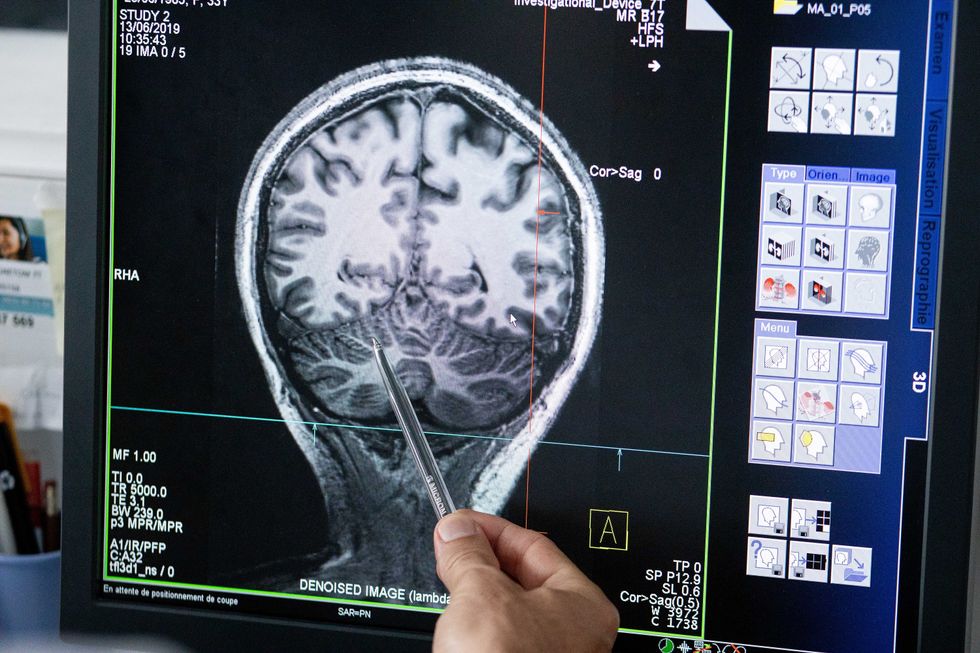
Understanding where in the patients’ brains seizures arise can give scientists a better idea of how to treat them and whether to use surgery versus medications.
The Human Brain Project
A network not unlike the brain’s own
Though the HBP will be closing this year, its legacy continues in various studies, spin-off companies, and its online platform, EBRAINS. “The HBP is one of the earliest brain initiatives in the world, and the 10-year long-term goal has united many researchers to collaborate on brain sciences with advanced computational tools,” Wang said. “Beyond the many research articles and projects collaborated on during the HBP, the online neuroscience research infrastructure EBRAINS will be left as a legacy even after the project ends.”
Those who worked within the HBP see the end of this project as the next step in neuroscience research. “Neuroscience has come closer to very meaningful applications through the systematic link with new digital technologies and collaborative work,” Jirsa stated. “In that way, the project really had a pioneering role.” It also created a level of interconnectedness within the neuroscience research community that never existed before—a network not unlike the brain’s own. “Interconnectedness is an important advance and prerequisite for progress,” Jirsa said. “The neuroscience community has in the past been rather fragmented and this has dramatically changed in recent years thanks to the Human Brain Project.”
According to its website, by 2023 HBP’s network counted over 500 scientists from over 123 institutions and 16 different countries, creating one of the largest multi-national research groups in the world. Even though the project hasn’t produced the in-silico brain as Markram envisioned it, the HBP created a communal mind with immense potential. “It has challenged us to think beyond the boundaries of our own laboratories,” Jirsa said, “and enabled us to go much further together than we could have ever conceived going by ourselves.”
